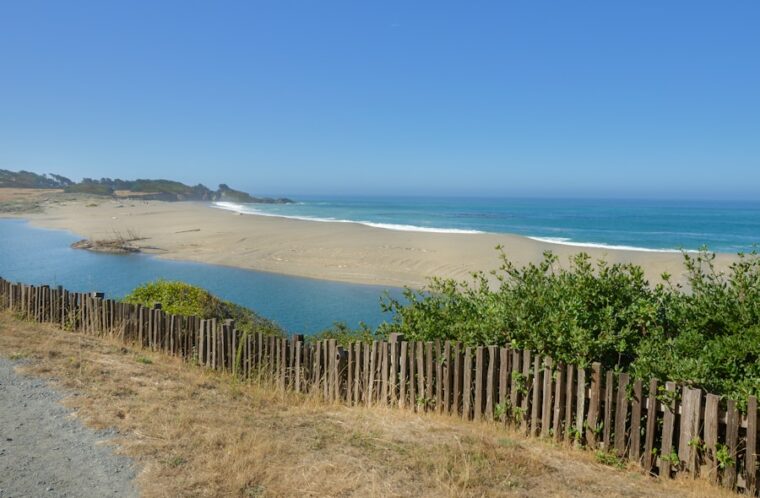Timor-Leste, also known as East Timor, is a small island nation located in Southeast Asia. It is situated in the eastern part of the island of Timor, with its northern coast facing the Timor Sea and its southern coast bordering the Savu Sea. The country is known for its stunning natural beauty, rich cultural heritage, and tumultuous history. Timor-Leste gained independence from Indonesia in 2002, making it one of the youngest nations in the world. Despite its troubled past, the country has made significant progress in recent years and has become an increasingly popular destination for travelers seeking off-the-beaten-path experiences.
The capital city of Timor-Leste is Dili, which is located on the northern coast of the island. Dili is a vibrant and bustling city, with a mix of colonial architecture, modern buildings, and traditional markets. The city is also home to a diverse population, with influences from Portuguese, Indonesian, and indigenous cultures. Outside of Dili, visitors can explore picturesque coastal towns, lush mountainous landscapes, and remote villages where traditional ways of life are still preserved. With its warm climate, friendly locals, and diverse attractions, Timor-Leste offers a unique and unforgettable travel experience for those willing to venture off the typical tourist trail.
Exploring the Indigenous Culture
One of the most captivating aspects of Timor-Leste is its rich indigenous culture, which is deeply rooted in the traditions and customs of the various ethnic groups that call the country home. The Timorese people are known for their warm hospitality and strong sense of community, and visitors to the country will have the opportunity to immerse themselves in local customs and traditions. One of the best ways to experience indigenous culture in Timor-Leste is by visiting traditional villages, where visitors can witness age-old practices such as weaving, woodcarving, and traditional dance performances. Many villages also host regular cultural events and festivals, providing a unique opportunity to witness traditional ceremonies and rituals.
In addition to exploring traditional villages, visitors to Timor-Leste can also learn about the country’s indigenous culture through its arts and crafts. The Timorese are skilled artisans, known for their intricate textiles, pottery, and basketry. Many of these traditional crafts are still produced using age-old techniques, and visitors can purchase authentic handmade souvenirs directly from local artisans. For those interested in learning more about the indigenous culture of Timor-Leste, there are also several museums and cultural centers in Dili that showcase traditional artifacts and provide insight into the history and customs of the country’s diverse ethnic groups.
Historical Sites and Landmarks
Timor-Leste has a complex and tumultuous history, with influences from Portuguese colonial rule, Indonesian occupation, and a struggle for independence that lasted for decades. As a result, the country is home to a wealth of historical sites and landmarks that offer insight into its past. One of the most significant historical sites in Timor-Leste is the Resistance Museum in Dili, which documents the country’s struggle for independence through a collection of photographs, artifacts, and personal accounts. The museum provides a sobering look at the hardships endured by the Timorese people during the Indonesian occupation and serves as a reminder of their resilience and determination.
Another important historical landmark in Timor-Leste is the Santa Cruz Cemetery, which is located in Dili. The cemetery is a poignant memorial to the victims of the Santa Cruz massacre, a tragic event that occurred during the struggle for independence. Today, the cemetery serves as a place of remembrance and reflection, with rows of white crosses marking the graves of those who lost their lives. Visitors to Santa Cruz Cemetery can pay their respects to the fallen and gain a deeper understanding of the sacrifices made by the Timorese people in their fight for freedom. In addition to these significant sites, Timor-Leste is also home to numerous colonial-era buildings, churches, and fortresses that provide a glimpse into its past as a Portuguese colony.
Traditional Cuisine and Culinary Experiences
The cuisine of Timor-Leste is a reflection of its diverse cultural influences, blending flavors and ingredients from Portuguese, Indonesian, and indigenous traditions. One of the most popular dishes in Timor-Leste is ikan sabuko, a spicy fish stew that is typically served with rice or cassava. Another local favorite is feijoada, a hearty bean stew that is often made with pork or beef and served with rice or bread. Visitors to Timor-Leste can also sample a variety of seafood dishes, including grilled fish, prawns, and squid, which are often seasoned with aromatic spices and herbs.
In addition to its savory dishes, Timor-Leste is also known for its sweet treats, including bolo de milho (corn cake) and batar daan (sweet rice pudding). Many traditional desserts in Timor-Leste are made with coconut milk, palm sugar, and tropical fruits such as mangoes and bananas. Visitors can sample these delicious treats at local markets and street stalls throughout the country. For those interested in learning more about Timorese cuisine, there are also opportunities to participate in cooking classes and food tours, where visitors can learn how to prepare traditional dishes using local ingredients and cooking methods.
Festivals and Celebrations
Timor-Leste is a country that loves to celebrate, with a calendar full of vibrant festivals and cultural events that showcase its diverse traditions and customs. One of the most important festivals in Timor-Leste is Independence Day, which is celebrated on May 20th to commemorate the country’s declaration of independence from Indonesia in 2002. The day is marked with parades, concerts, and fireworks displays, as well as traditional dance performances and cultural exhibitions. Independence Day is a time for national pride and unity, with people from all over the country coming together to honor their hard-won freedom.
Another popular festival in Timor-Leste is Baucau Carnival, which takes place in the coastal town of Baucau during the Easter season. The carnival features colorful processions, music performances, and street parties that attract locals and visitors alike. Baucau Carnival is a lively and joyous celebration that highlights the cultural diversity of Timor-Leste through music, dance, and traditional costumes. In addition to these major events, there are also numerous smaller festivals throughout the year that celebrate religious holidays, harvests, and other important occasions in Timorese culture.
Natural Wonders and Outdoor Activities
Timor-Leste is blessed with an abundance of natural beauty, including pristine beaches, lush rainforests, and rugged mountain ranges. The country’s diverse landscapes provide ample opportunities for outdoor activities such as hiking, diving, snorkeling, and birdwatching. One of the most popular outdoor destinations in Timor-Leste is Jaco Island, a remote paradise located off the eastern coast of the country. Jaco Island is known for its crystal-clear waters, white sandy beaches, and vibrant coral reefs that are teeming with marine life. Visitors can take boat trips to Jaco Island to enjoy swimming, snorkeling, and sunbathing in this unspoiled tropical paradise.
For those who prefer mountainous terrain, Timor-Leste offers excellent hiking opportunities in its interior regions. The country’s highest peak is Mount Ramelau, which stands at over 9,000 feet above sea level. Hiking to the summit of Mount Ramelau provides breathtaking panoramic views of the surrounding landscapes and is a challenging yet rewarding adventure for outdoor enthusiasts. In addition to hiking and diving, visitors to Timor-Leste can also explore its national parks and nature reserves, which are home to diverse flora and fauna including rare orchids, exotic birds, and endangered species such as crocodiles and dugongs.
Practical Tips for Traveling in Timor-Leste
Traveling in Timor-Leste requires some careful planning and preparation due to its remote location and limited infrastructure. Visitors should be aware that transportation options within the country are limited, with most roads being unpaved and public transportation being scarce outside of major cities. Renting a car or hiring a local driver is often the best way to get around Timor-Leste, although travelers should be prepared for rough road conditions and long travel times between destinations.
In terms of accommodation, there are a variety of options available in Dili ranging from budget guesthouses to luxury hotels. Outside of Dili, however, accommodation choices may be more limited so it’s important to book in advance if possible. Additionally, visitors should be mindful of cultural norms when traveling in Timor-Leste by dressing modestly and respecting local customs. It’s also important to be aware of potential health risks such as malaria and dengue fever when visiting rural areas or spending time outdoors.
Overall, traveling in Timor-Leste offers a unique opportunity to explore a country that is still relatively untouched by mass tourism. With its rich cultural heritage, stunning natural landscapes, and warm hospitality, Timor-Leste provides an unforgettable travel experience for those seeking adventure off the beaten path. By taking practical considerations into account and embracing the local way of life, visitors can discover the hidden treasures of this captivating island nation.


